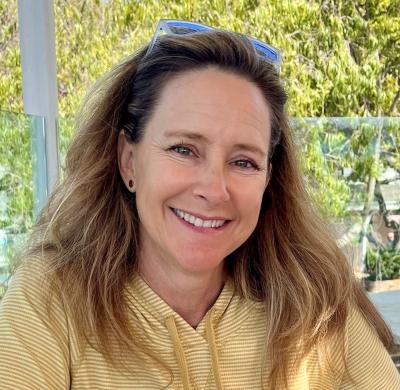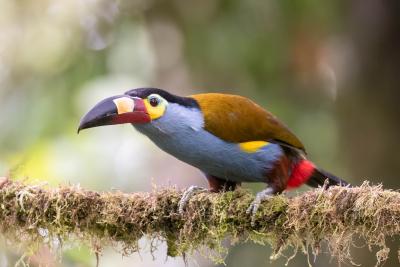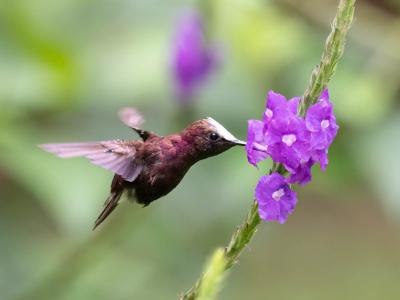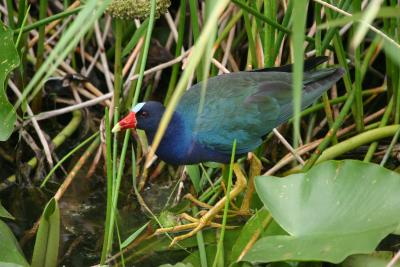2023 Narrative
In Summary
Our tour to Maine and New Hampshire in early June was delightfully birdy and full of delicious seafood. Numbers of biting insects were entirely tolerable and we enjoyed pleasantly cool temperatures, with sun and rain and fog and everything in between. Bird highlights included unseasonal King Eider and Red-necked Grebe, the highly sought-after Bicknell’s Thrush (eventually!), gorgeous Saltmarsh Sparrows (along with Nelson’s and at least one hybrid thereof), lots of warblers (including eye-shattering Bay-breasted, Cape May, Blackburnian, Canada, Palm, Blackpoll, and more…) and of course, breeding seabirds like Atlantic Puffin, Razorbill, and Arctic Tern. We took full advantage of the breadth of habitats in the state, from saltmarshes to blueberry barrens to stunted mountaintop spruces to coastal headlands. It was delightful to spend a week exploring and enjoying the breeding diversity of the region!
In Detail
We started on the coast of southern Maine, where our first morning took us to the Kennebunk Plains and its cast of locally rare breeding birds like Grasshopper and Vesper Sparrows. Several Prairie Warblers and Eastern Towhees also cooperated quite well. We continued checking various coastal spots for the rest of the day, connecting with a couple Roseate Terns at Pine Point (plus unexpected adult Arctic Terns sitting with Commons on the mudflats, rare inshore here) and phenomenal views of adorable Piping Plovers. Perhaps the highlight of the day was the great show from multiple Saltmarsh and Nelson’s Sparrows, plus at least one confusing hybrid. And of course, we had our first taste of Maine lobster for lunch!
Our second day in the “south” started in Wells, where we picked up a Willow Flycatcher just after our picnic breakfast and then had a great walk around Laudholm Farm. Bobolinks were much appreciated, and we teased out a couple glimpses of migrant Yellow-bellied Flycatchers near locally breeding Alders. From here we continued north to Biddeford Pool, where it took a little while to find the star of the show…a lingering male King Eider! Rare here even in winter, but even more surprising in June…and who could ever get sick of male King Eiders no matter where or when? Icing on the cake was a pair of vocalizing Red-necked Grebes, also quite unusual here in summer.
It was then time to drive north towards Bar Harbor, where we dodged some heavy rain but managed to find Sandhill Cranes and Purple Martins at Messalonskee Lake in Belgrade. We pulled into town after a fairly easy drive and enjoyed dinner at Blaze, excited for our boat trip to Petit Manan the next morning…
…well, not so fast. Dense fog meant our boat trip was postponed, but we enjoyed a great day of birding nonetheless. Sieur de Monts Spring produced a great experience with juvenile Barred Owls (one of which spent some time gulping down a Red Squirrel!), plus the most cooperative Winter Wren in the world, a stunning Blackburnian Warbler, an ear-shattering Ovenbird, and a migrant Olive-sided Flycatcher. We headed off-island to the Hollingsworth Trail to try for Spruce Grouse, unsuccessfully, but enjoyed awesome views at several more warblers (Nashville, Black-throated Green, Magnolia, Myrtle, Palm) in stunning habitat. The afternoon was spent atop Cadillac Mountain where the fog cleared just enough to see Frenchman Bay, and a quick stop at some nearby ponds where families of Hooded Merganser and Wood Duck kept us duly entertained.
Our boat trip the next morning went off without hitch, even with some lingering fog…we all were excited to see our first Atlantic Puffins of the trip, plus a few Razorbills! Those who scanned during the trip out were lucky to catch glimpses of Wilson’s Storm-Petrels and a small flock of Red-necked Phalaropes. The dense fog around Petit Manan Island probably cut our time a bit short there, so we cruised around the nooks and crannies of Frenchman Bay, where more Black Guillemots and a Bald Eagle kept us company. After lunch at the iconic Jordan Pond House, we headed further Downeast toward Machias, with a quick stop at some blueberry barrens along the way. I was prepared to spend quite a bit of time searching for Upland Sandpiper here, but I needn’t have worried…they ran across the road just in front of the van, and proceeded to give incredible views just a few meters away. Wow!
Our two nights in Machias are primarily centered around a very special activity…a boat trip to Machias Seal Island, perhaps the pinnacle of the entire tour! This incredible place is home to thousands of pairs of Atlantic Puffins, Razorbills, and Common Murres, plus a growing colony of Arctic Terns. There’s even an adult Northern Gannet hanging around, perhaps prospecting for a future breeding site? We’re always at the mercy of the weather, but we got so lucky with gorgeous sea conditions that allowed us to land and spend time in the blinds, just a few feet away from all these amazing birds. It’s an unforgettable and multi-sensory birding experience, with the sights, sounds, and smells of the colony seared into our memories. Totally awesome.
Other highlights around Machias included breeding Lincoln’s Sparrow and Palm Warbler in a gorgeous bog, a pleasant visit to West Quoddy Head (ironically the easternmost point in the continental U.S.) with Black-legged Kittiwake and Great Cormorant on the rocks, a great pizza dinner in Lubec, and a brazen Cape May Warbler feeding at eye-level at Moosehorn National Wildlife Refuge (plus nearby Bay-breasted and Canada Warblers as supporting cast!)…not to mention the constant backdrop of spruce-studded coastline and Sphagnum-moss-covered forest floors. This special corner of Maine never gets old.
From here we headed all the way across the state to Rangeley, picking up a few remaining species before our grand finale in New Hampshire. Mosquitos and black flies were somewhat more bothersome around here, but we persevered, and had nice encounters with a bedraggled pair of Gray Jays, a super cooperative Northern Waterthrush, amazing views of Yellow-bellied Flycatcher, a brief Black-backed Woodpecker, and an adorable family of Common Merganser. Oh yeah, and two Moose!
Heading into Gorham, New Hampshire, and we were all a bit nervous before heading up Mount Washington. Okay, maybe I was the most nervous…you just never know what the weather gods will give you up here. And everyone really wants to see Bicknell’s Thrush! Well, our time up on the mountain was entirely typical…fog, driving wind, horizontal rain in our faces. Oof. We waited, and waited, and hope was dwindling as distant calls remained frustratingly heard-only…and as the rain pelted us some more. But eventually, finally, there it was…a Bicknell’s Thrush perched up, totally in the open atop a stunted spruce! In the scope for everyone. Phew.
After that truly perfect experience with such a tough bird (I swear, the weather is supposed to be a part of it!), we spent our final day playing cleanup in the White Mountains, with great views of Philadelphia Vireo and Blackpoll Warbler topping the list, and even a few more heard-only Bicknell’s Thrushes. A quick stop at Brownfield Bog on the way back to Portland produced a long scope view of Black-billed Cuckoo, curious Yellow-throated Vireos, and good studies of Warbling Vireos (especially in comparison with the Philadelphia Vireos we saw earlier in the day).
Just like that, we were back in South Portland, enjoying one final dinner. We had a great time exploring the nooks and crannies of Maine (and a bit of New Hampshire), and I’m so grateful for everyone’s good humor, flexibility, and patience. I’m looking forward to crossing paths in the future!
Luke Seitz 2023
Back to Narratives












































































